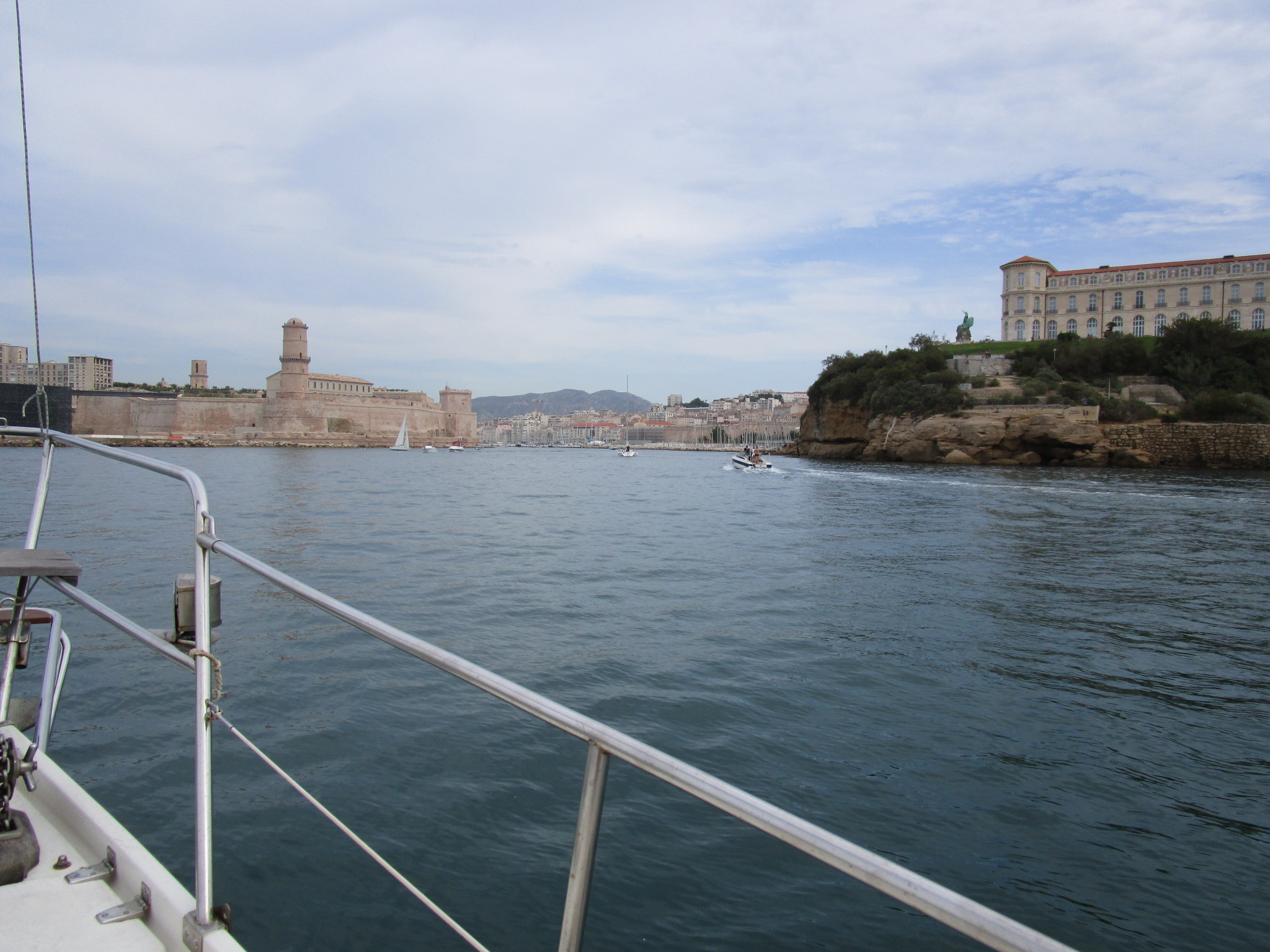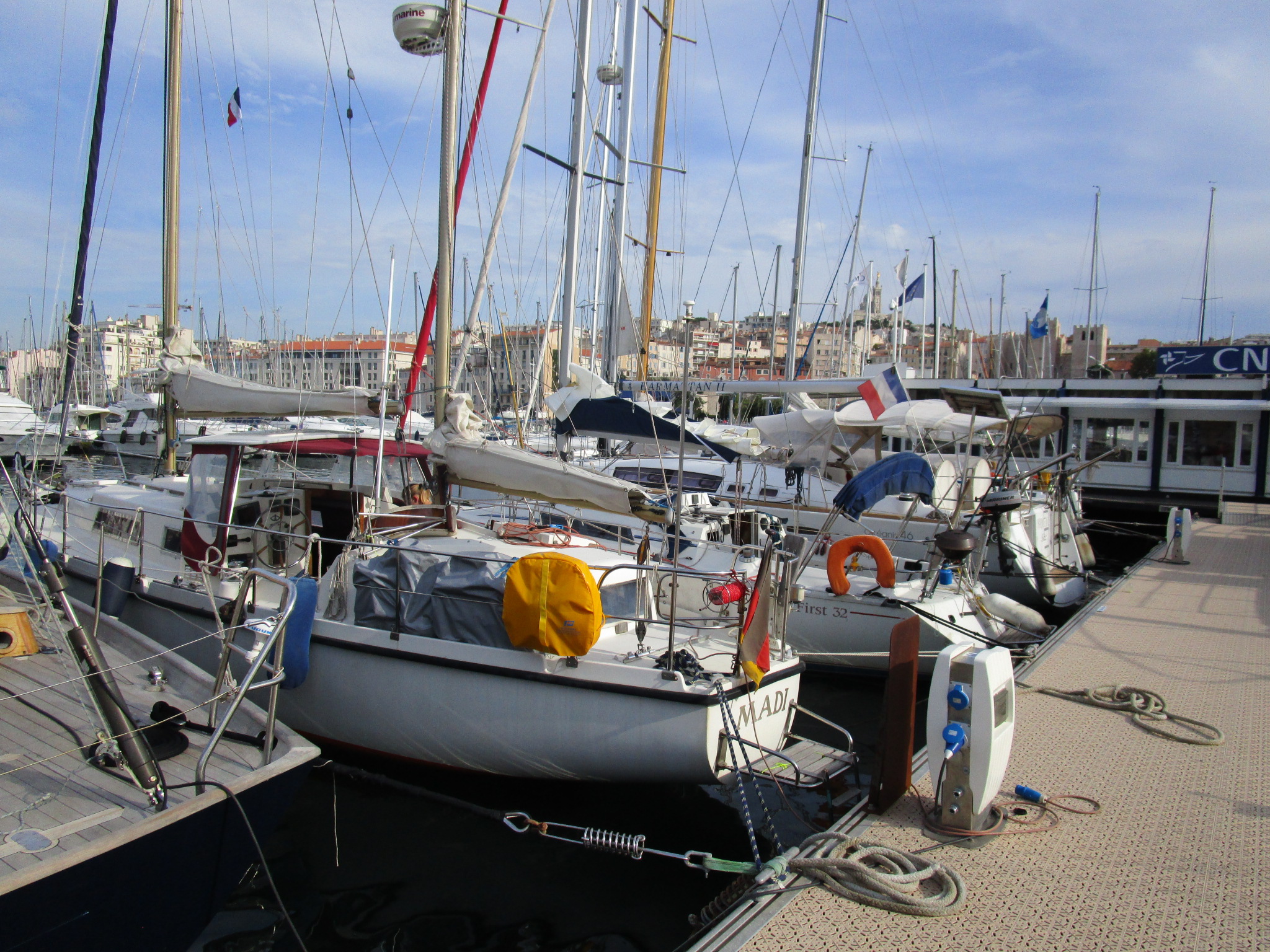As I wrote in the preview post, my uncle Andreas is a (mostly) retired German businessman who has a condo on the French coast and does quit a bit of sailing. His biggest boat is a 41-foot Euros, built in the 1970s by the French shipwright firm Amel. My uncle has had the boat for years and has gone on many sailing voyages with it.
 I have been planning this sailing trip for about two years. Two summers ago, Andreas went on two-month trip around the Mediterranean, and was joined by friends and family at various times during the trip. I heard about this and declared my intent to join him someday, and we quickly made plans to target this summer for the trip.
I have been planning this sailing trip for about two years. Two summers ago, Andreas went on two-month trip around the Mediterranean, and was joined by friends and family at various times during the trip. I heard about this and declared my intent to join him someday, and we quickly made plans to target this summer for the trip.
I didn’t know how to sail. I mean, I understand the physics of it, but that’s not worth much. So last summer I spent a month of Saturdays driving up to Acworth (Atlanta exurb) to take sailing lessons on Lake Allatoona at the Atlanta Yacht Club. They teach you the basics — what are the parts of a typical small sailboat, how does the wind work with the sails, what is the lingo used to communicate between the people operating the boat. They shoved us out on the lake in little “420” sailboats, each manned by two people, and we learned on the go. By the end I was pretty comfortable with it, although most days we had very little wind.
A few weeks ago, I had a refresher session with a friend who has a boat on that lake.
 So here I am, on a sailboat at dawn, heading out into the Mediterranean Sea. Besides Andreas and me, also on board are my cousin Andy and his girlfriend Nora. Andy (Andreas’ son) has lots of experience sailing as well, and so between the two of them we’d always have someone at the helm who knew what they were doing. The rest of us were “crew”, meaning it was our job to make sail adjustments per the captain’s orders. Most of the time, we would just be executing a simple turn (usually a “tack” into the wind), which is just about the most basic sailing maneuver there is, so in theory we all knew what we had to do.
So here I am, on a sailboat at dawn, heading out into the Mediterranean Sea. Besides Andreas and me, also on board are my cousin Andy and his girlfriend Nora. Andy (Andreas’ son) has lots of experience sailing as well, and so between the two of them we’d always have someone at the helm who knew what they were doing. The rest of us were “crew”, meaning it was our job to make sail adjustments per the captain’s orders. Most of the time, we would just be executing a simple turn (usually a “tack” into the wind), which is just about the most basic sailing maneuver there is, so in theory we all knew what we had to do.
Of course, that’s assuming there’s some wind, and open water. At dawn this particular morning, we had neither. Fortunately, this ship has an engine (which would figure into the story later) and so if we are lacking wind, or open water to sail back and forth in, we just pull in the sails and fire up the engine. It pokes along at about 7 knots (8 miles per hour) which is obviously slow by road standards but honestly feels like a good clip when you are in the open water and sloshing through ocean.
 The tentative plan, shown to the right, is to disembark from our home port (Port Camargue) and spend eight days working our way around towards Corsica and back. At the end of the sailing voyage (or at least my part of it) we will arrive in Marseille, where I will catch a train back to Paris, straight to the airport and back to Atlanta.
The tentative plan, shown to the right, is to disembark from our home port (Port Camargue) and spend eight days working our way around towards Corsica and back. At the end of the sailing voyage (or at least my part of it) we will arrive in Marseille, where I will catch a train back to Paris, straight to the airport and back to Atlanta.
So, our first day’s leg was to simply get out of the home port and make the hop over to Marseille.
Andy fired up the engine and we slowly navigated out of the small harbor and into the open water. As it turns out, we didn’t have much wind on this first day, and while we did unfurl some sails at some point, they weren’t doing much for us. I could have sworn I took pictures of them, but don’t see them in my picture archive now, so who knows. Not to worry, LOTS of pictures of sails are coming! I do recall that I was quite comfortable on the water, with no hint of seasickness. But for how long …
 So we went back to motoring. Which Andreas was happy to do, since this was the first time he got to see his new engine in operation. The sailboat had been in drydock for over a year (maybe two) to get the engine replaced, and it now had a brand new Volvo marine engine in it. The engine was directly below our feet in the main cockpit / wheelhouse area, and provided a solid thrumming soundtrack to complement the gentle waves that we were slowly plowing through.
So we went back to motoring. Which Andreas was happy to do, since this was the first time he got to see his new engine in operation. The sailboat had been in drydock for over a year (maybe two) to get the engine replaced, and it now had a brand new Volvo marine engine in it. The engine was directly below our feet in the main cockpit / wheelhouse area, and provided a solid thrumming soundtrack to complement the gentle waves that we were slowly plowing through.
 After a whole day of sailing (driving, really), we approached the busy harbor of Marseille. The old harbor in the city center was utterly jammed with a variety of pleasure boats, both sailboats and motor yachts, and it took us a while to find our berth.
After a whole day of sailing (driving, really), we approached the busy harbor of Marseille. The old harbor in the city center was utterly jammed with a variety of pleasure boats, both sailboats and motor yachts, and it took us a while to find our berth.
After cleaning ourselves up, Andreas and I hurried into the city streets to find a few critical supplies — suntan lotion and USB chargers, can you imagine anything more important? Then we met up with Andy and Nora, found a place to eat (the memory of which now escapes me), got back to the boat, and turned in for the night.